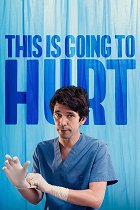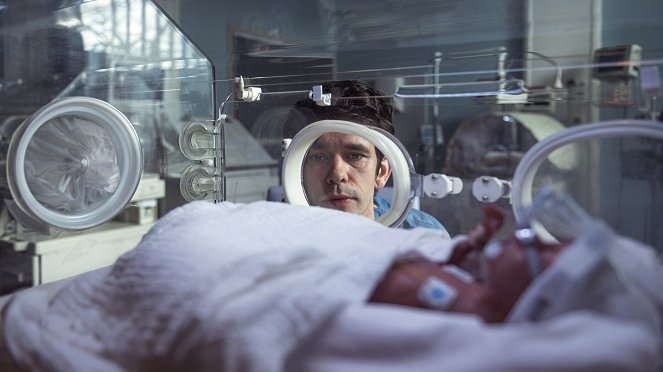Creators:
Adam KayScreenplay:
Adam KayCast:
Ben Whishaw, Michele Austin, Alex Jennings, Rory Fleck Byrne, Tom Durant Pritchard, Harriet Walter, Ashley McGuire, Kadiff Kirwan, Ambika Mod, Jade Johnson (more)Episodes(7)
Plots(1)
Painfully funny, heartbreakingly honest – welcome to the weird world of an NHS labour ward. Ben Whishaw stars in Adam Kay's raw, ridiculous rollercoaster diary of a doctor’s life. (HBO Max)
Reviews (1)
This seven-part adaptation of the bestselling book of the same name is set in the maternity ward of a British state-run hospital. The main character is young obstetrician Adam Kay, who, due to endlessly long workweeks, is constantly sleep-deprived, overworked, prone to making mistakes and without the energy to focus on his partner or anything else. From dawn to dusk, he is occupied with caesarean sections, severed umbilical cords, inverted uteruses, severe bleeding and extracting foreign objects out of vaginas. In this respect, the series is quite graphic, as it prides itself on authenticity in what it depicts and in what the characters say (Adam occasionally turns to the camera in order to explain certain medical terms). Adam keeps his sense of detachment with cynicism, dark humour and a degree of honesty bordering on recklessness (a combination that, together with the protagonist’s breaking of the fourth wall, gives the narrative a vibe along the lines of Fleabag). Not all of his colleagues and patients appreciate his direct approach. Comedic asides are rather organically woven into the daily struggles for someone’s life, just as we learn details of the doctors’ private lives without that slowing the story’s rapid pace. The transitions between comedy and the poignant and heart-rending drama of a man broken by the system work flawlessly due to Ben Whishaw’s unforced performance in the lead role. Though Adam is dedicated to his work, the main problem is not his commitment, but the underfunding of the overburdened hospital, which is one of the series’ most essential motifs, thanks to which This is Going to Hurt stands out among the numerous works set in a similar environment (on the other hand, it's not so different from them in the way it puts doctors on a pedestal and to some degree disparages patients). The hospital’s management takes great care to ensure that the staff members do not use inappropriate language and smile broadly during the minister’s visit, but care less that they have enough sterile clothing or that they are not at constant risk of mental and physical collapse due to the shortage of people and time to rest. Using the example of a particular institution and the well-constructed dramas of multiple characters who are in the throes of becoming disillusioned, the series uncompromisingly analyses the system of dual morality, where instead of real problems and inequalities (resulting from, for example, the class or ethnicity of the doctors), the primary issue is how things appear and what their symbolic dimension is. As long as the right words are used and certain external norms, which sometimes have nothing to do with actual practice, are followed, everything is (outwardly) fine. In reality, institutions and individuals are breaking down behind this façade. It is thanks to those who carry the burden that, despite the torrent of crises, these structures have not completely collapsed yet.
()

